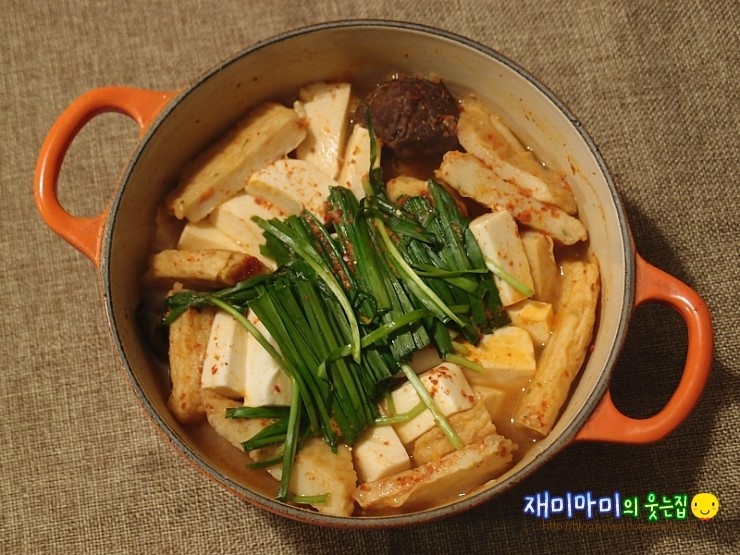Heartwarming Fish Cake and Soybean Paste Stew (Eomuk Doenjang Jjigae)
A Perfect Comforting Stew for Chilly Weather: Eomuk Doenjang Jjigae

Experience the delightful collaboration of savory soybean paste stew and chewy fish cakes! This combination might surprise you, but the taste is exceptionally good. The fish cakes lend a deep umami flavor, making this Eomuk Doenjang Jjigae (or Eomuk Doenjang Guk) incredibly easy to prepare. As the weather gets colder, this stew becomes even more comforting and delicious.
Stew Ingredients- 3 cups rice water (water used to rinse rice)
- 1 piece dried kelp (about 5×5 cm)
- 1 dried shiitake mushroom
- 5 cm piece of Korean radish (mu)
- Generous amount of fish cakes (eomuk), about 2-3 sheets
- 1/2 block of firm tofu
Cooking Instructions
Step 1
In the rice water, add the dried kelp, dried shiitake mushroom, and radish cut into thin slices. Bring to a boil over high heat. Once boiling, remove the kelp and shiitake mushroom. Continue to simmer over medium heat for about 5 minutes, or until the radish becomes translucent, allowing its fresh flavor to infuse the broth.

Step 2
Cut the fish cakes into desired shapes (triangles or long strips). Briefly blanch them in boiling water for about 30 seconds. This step removes excess oil from the fish cakes, resulting in a cleaner broth, and helps maintain their chewy texture.

Step 3
As the broth returns to a boil, skim off any foam or impurities that rise to the surface using a spoon. Add the blanched fish cakes to the pot and let them simmer for another 2-3 minutes. This allows the fish cakes to absorb the rich flavor of the stew.

Step 4
Stir in the soybean paste (doenjang). It’s best to dissolve the doenjang in a small amount of the hot broth first using the back of a ladle or spoon to ensure it breaks down smoothly without lumps. Gradually incorporate it into the main pot.

Step 5
Add a small amount of red pepper paste (gochujang). This not only enhances the color of the stew but also adds a subtle sweetness and depth of flavor, balancing the saltiness of the doenjang and creating a more complex taste profile.

Step 6
Cut the firm tofu into bite-sized cubes. Gently add the tofu to the simmering stew. Be careful not to stir too vigorously after adding the tofu, as it can break apart easily if overcooked.

Step 7
Taste the stew and adjust the seasoning if necessary with a little salt or Korean soup soy sauce (guk-ganjang), keeping in mind the saltiness of the doenjang. Finally, add a pinch of red pepper flakes or finely chopped cheongyang peppers for a touch of heat, followed by chopped green onions and chives. Turn off the heat immediately to preserve the fresh aroma of the vegetables.




